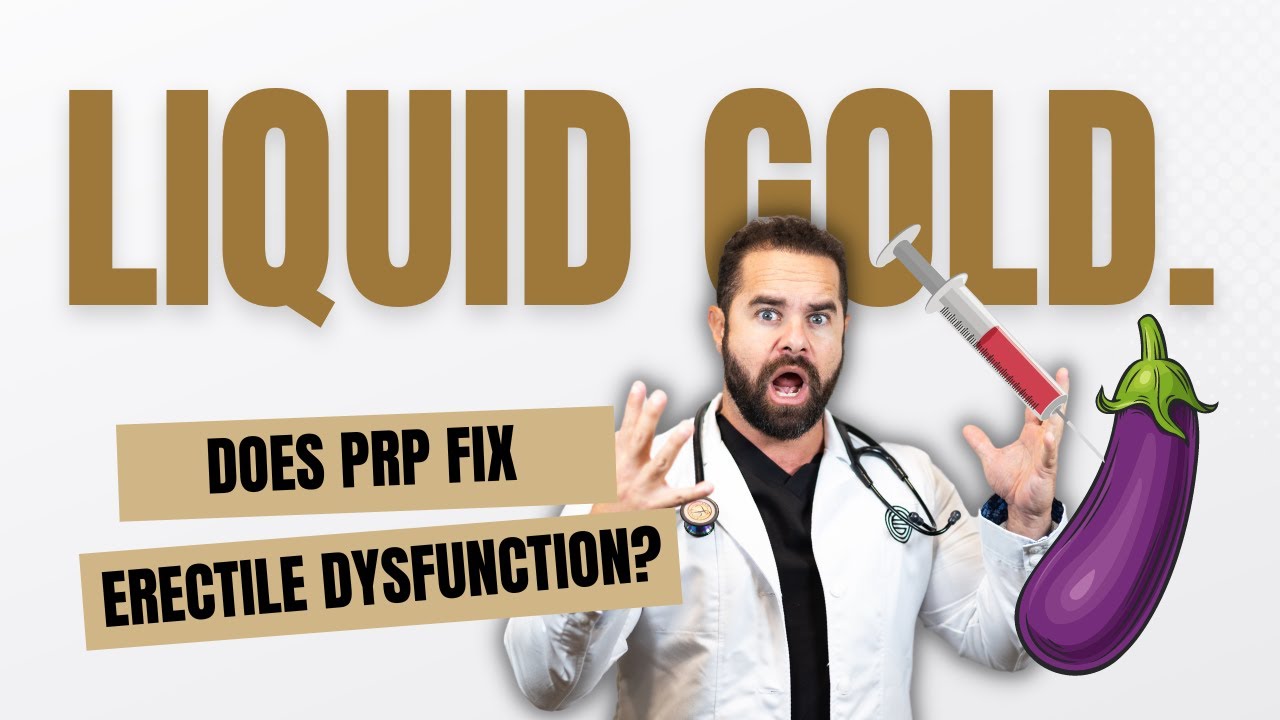
Erectile dysfunction (ED) is a common issue that impacts countless lives globally, causing emotional and relational strain. In this article, we explore the groundbreaking treatment: platelet-rich plasma (PRP) injections. In recent years, PRP injections have become increasingly popular as a treatment for ED, especially because it harnesses the body’s growth factors to stimulate natural healing and regeneration. But will injecting PRP fix ED? Let’s find out.
What is erectile dysfunction?
ED is not just a personal struggle; it's a global concern that affects millions of men worldwide. This condition can severely impact your quality of life and intimate relationships, leading to stress and decreased self-esteem. Erectile dysfunction is characterized by the inability to achieve or maintain an erection sufficient for satisfactory sexual performance. The causes can be multifactorial, including physiological issues like diabetes, cardiovascular disease, and hormonal imbalances, and psychological factors like stress, anxiety, and depression.

What is PRP therapy?
PRP therapy is a scientific procedure where your blood is drawn, enriched for platelets, and then reinjected to rejuvenate cellular growth and blood vessels in the targeted area. This method has shown promising results in treating various conditions, including ED. Platelets are a component of blood that plays a key role in healing processes. By concentrating these platelets, PRP therapy harnesses their natural growth factors to stimulate tissue repair and regeneration.
The science behind PRP injections for ED
The process begins with drawing your blood, which is then spun in a centrifuge to concentrate the platelets. These platelets are rich in growth factors, often referred to as "liquid gold." The concentrated platelets are then injected specifically into the corpora cavernosa of the penis. The outcomes include enhanced blood flow, cellular growth, and tissue regeneration, which lead to improved erectile function and sexual satisfaction. The growth factors released by platelets attract stem cells to the area, promoting the formation of new blood vessels (angiogenesis) and the repair of damaged tissue, which leads to improved erectile function.

Efficacy of PRP injections for ED
A study in the Journal of Sexual Medicine revealed a staggering 76% of men experienced enhanced erectile function post-PRP, compared to 25% in a placebo group. Multiple studies have confirmed the benefits of PRP as a treatment for penile tissue health. However, PRP isn't a lone warrior; it can be combined with other ED treatments, such as shockwave therapy and vacuum erection devices (VED), to amplify their effects.
Shockwave therapy
Shockwave therapy is a non-invasive treatment that uses low-intensity sound waves to improve blood flow and promote healing. Applied to the penis, these sound waves stimulate the formation of new blood vessels and enhance blood circulation, leading to improved erectile function. This therapy is often combined with PRP to maximize results, offering a synergistic effect that enhances overall outcomes for treating erectile dysfunction.
Vacuum erection devices (VEDs)
Vacuum erection devices (VEDs) are non-invasive tools designed to help achieve and maintain an erection. They work by creating a vacuum around the penis, which draws blood into the erectile tissues, leading to an erection. Once erect, a constriction ring is placed at the base of the penis to maintain the erection. VEDs are often used in conjunction with other treatments like PRP to enhance effectiveness in managing erectile dysfunction.

PRP and other conditions
PRP therapy has shown promising results in cases of ED induced by diabetes, nerve damage, and even post-prostate cancer treatments. These conditions often lead to reduced blood flow and nerve function in the penis, making it difficult to achieve and maintain an erection.
For diabetic patients, PRP can help counteract the vascular damage caused by high blood sugar levels. In cases of nerve damage, PRP can support nerve regeneration and repair. Post-prostate cancer treatment, which often involves surgery or radiation, PRP can aid in the recovery of erectile function by promoting tissue healing. By stimulating natural regeneration, PRP therapy can address the underlying root causes of erectile dysfunction.
Considerations and side effects
Like any medical procedure, PRP is not without its caveats. While the therapy has been around for decades, it is still under scrutiny. Minor side effects like bruising and mild pain are part of the package, and some patients may experience temporary swelling or inflammation at the injection site. The procedure can range from $1,500 to $3,000 per session, and often multiple sessions are required. Additionally, the effectiveness of PRP can vary depending on individual health conditions and the severity of ED.
Consult GLM for PRP therapy for ED
At Genesis Lifestyle Medicine, we treat erectile dysfunction and many other issues with PRP, and we have found tens of thousands of patients to benefit from our treatments. PRP therapy offers a promising solution for those who have tried everything and still suffer from ED. While more research is needed to understand its long-term effects, the current data is encouraging. We combine PRP with other advanced treatments to provide comprehensive care tailored to individual needs — schedule a consultation to learn more about PRP therapy for ED.




